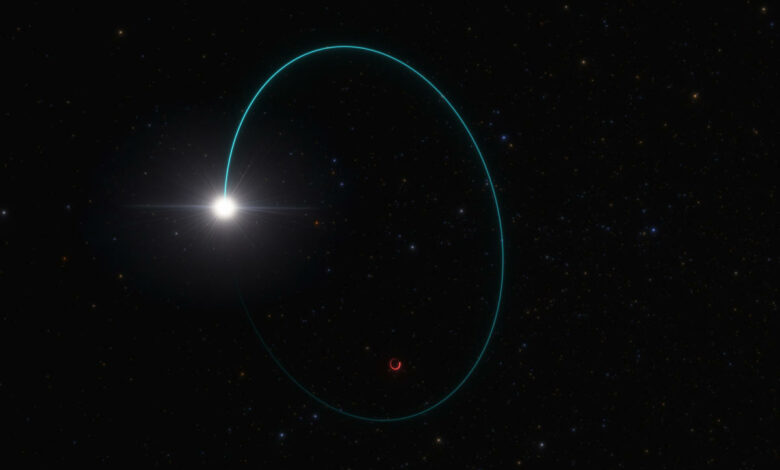ESA’s Gaia mission discovers the biggest stellar black hole in our galaxy yet

In addition to the supermassive black hole at the center of our galaxy, the Milky Way also serves as home to smaller stellar black holes that form when a massive star collapses. Scientists believe there are 100 million stellar black holes in our galaxy alone, but most of them have yet to be discovered. The ones that had already been found are, on average, around 10 times the size of our sun, with the biggest one reaching 21 solar masses. Thanks to the information collected by the European Space Agency’s Gaia mission, though, scientists have discovered a stellar black hole that’s 33 times the size of our sun, making it the biggest one of its kind we’ve ever seen in our galaxy so far. It’s also relatively close to our planet at around 1,926 light-years away.
Gaia BH3, as it’s now called, was first noticed by a team of ESA scientists poring over data from the mission to look for anything unusual. An old giant star from the nearby Aquila constellation caught their attention with its wobbling, leading to the discovery that it was orbiting a massive black hole. BH3 was hard to find despite being so close — it’s now the second closest known black hole to our planet — because it doesn’t have celestial bodies close enough that could feed it matter and make it light up in X-ray telescopes. Before its discovery, we’d only found black holes of comparable size in distant galaxies.
The ESA team used data from ground-based telescopes like the European Southern Observatory to confirm the size of the newly discovered celestial body. They also published a paper with preliminary findings before they release a more detailed one in 2025, so that their peers could start studying Gaia BH3. For now, what they know is that the star orbiting it has very few elements heavier than hydrogen and helium, and since stellar pairs tend to have similar compositions, the star that collapsed to form BH3 could’ve been the same.
Scientists have long believed that it’s the metal-poor stars that can create high-mass black holes after they collapse, because they lose less mass in their lifetimes. In other words, they’d theoretically still have a lot of materials left by the time of their death to form a massive black hole. This was apparently the first evidence we’ve found that links metal-poor stars with massive stellar black holes, and it’s also proof that older giant stars developed differently than the newer ones we see in our galaxy.
We’ll most likely see more detailed studies about binary systems and stellar black holes that use data from BH3 and its companion star in the future. The ESA believes that BH3’s discovery is just the beginning, and it’s going to be the focus of more investigations as we seek to unravel the mysteries of the universe.
Source link




